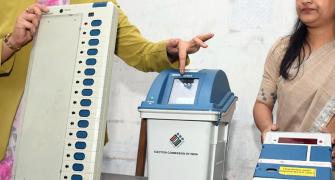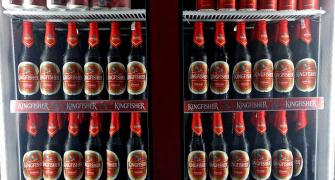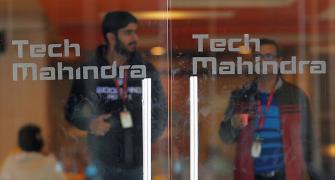International rating agency Standard & Poor's in its latest research report 'China, India, and the Fate of Globalisation' released on Wednesday said India's has a more transparent fiscal system and it enjoys more monetary flexibility than China.
The report, written by Joydeep Mukherji, reviews the course of reform in both countries and assesses the main challenges they face in becoming developed nations.
Neither China nor India enjoys much fiscal flexibility which is affecting their sovereign credit ratings, said the report. S&P has assigned a BBB+ investment grade long term foreign currency rating and positive outlook to China, compared with a BB speculative grade long teerm foreign currency rating and positive outlook assigned to India.
India's annual budget deficit of around 10 per cent of gross domestic product and government debt reaching 80 per cent of GDP constraints India's sovereign credit ratings, said S&P. The deficit in China stands at around 3 to 4 per cent of GDP and debt around 38 per cent.
Stating that fiscal activity is more transparent in India, it said much of China's future government debt has been piling up as bad loans in the financial system.
The cost resulting from the contingent liabilities of the financial system that ultimately will be borne by the government is the main constraint on China's sovereign credit rating, said the international rating agency.
India enjoys more monetary flexibility than China on account of its sophisticated financial markets and a flexible exchange rate. Interest rates are largely controlled by the Chinese government, forcing it to rely upon administrative measures to influence the flow of lending.
Indian authorities, in contrast, can apply monetary policy tools like the central bank's lending rate or open market operations to influence market behaviour.
The poor quality of bank loans and the fear of the impact of potentially higher interest rates on cash strapped state owned enterprise borrowers, deters the Chinese government from liberalising interest rates, said the rating agency.
Much of China's bad loans problems reflects the role of financial institutions as fiscal agents of the government during the earlier years of reforms. This strategy has been costly, with non-performing loans (NPLs) estimated to exceed 40 per cent of total loans.
Comparing the pace of tax reforms in India and China, the rating agency said tax reforms has been largely successful in China laying the foundation of a modern tax system.
General government revenue in China is projected to reach 20 per cent of GDP in 2004 compared with only 13 per cent in 1998. China's VAT accounts for about one-third of the total tax revenue providing a solid base for tax buoyancy as the economy grows.
Budgetary problems in India's central and state government have denied them the resources needed for investing in physical infrastructure, in sharp contrast with China. Indian public sector investment has declined to less than 7 per cent from more than 9 per cent of GDP in 1991.
Capital spending by Chinese government, has increased impressively. Poor physical infrastructure has slowed the pace of economic growth and deterred domestic and foreign investment in India, even in sectors that have more liberal policies than China said S&P.
Comparing the political scenario in both countries S&P said that India is a politically open society that is slowly embracing the market economy.
China is a politically closed society moving to a market from a semimarket economy, China may achieve first world status before India, but it will have to avoid a political hard lending.








